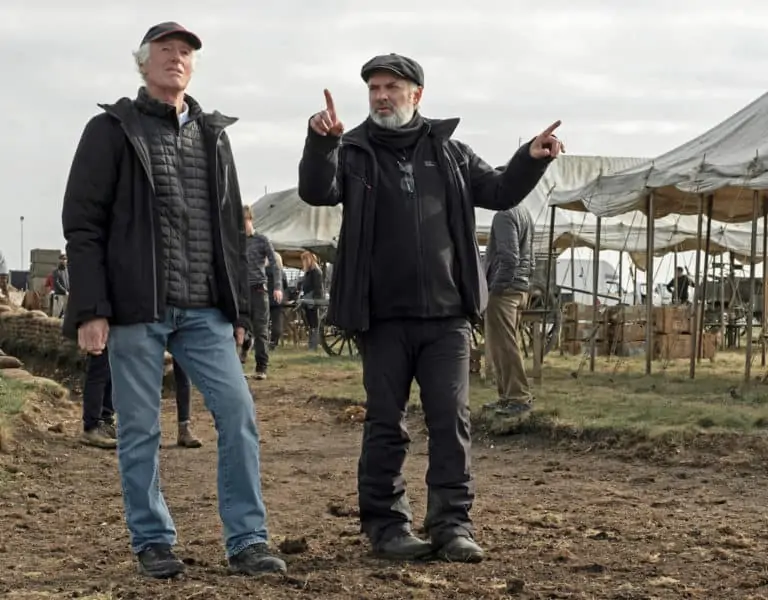Q & A with a True Brit
Roger Deakins BSC ASC / True Grit
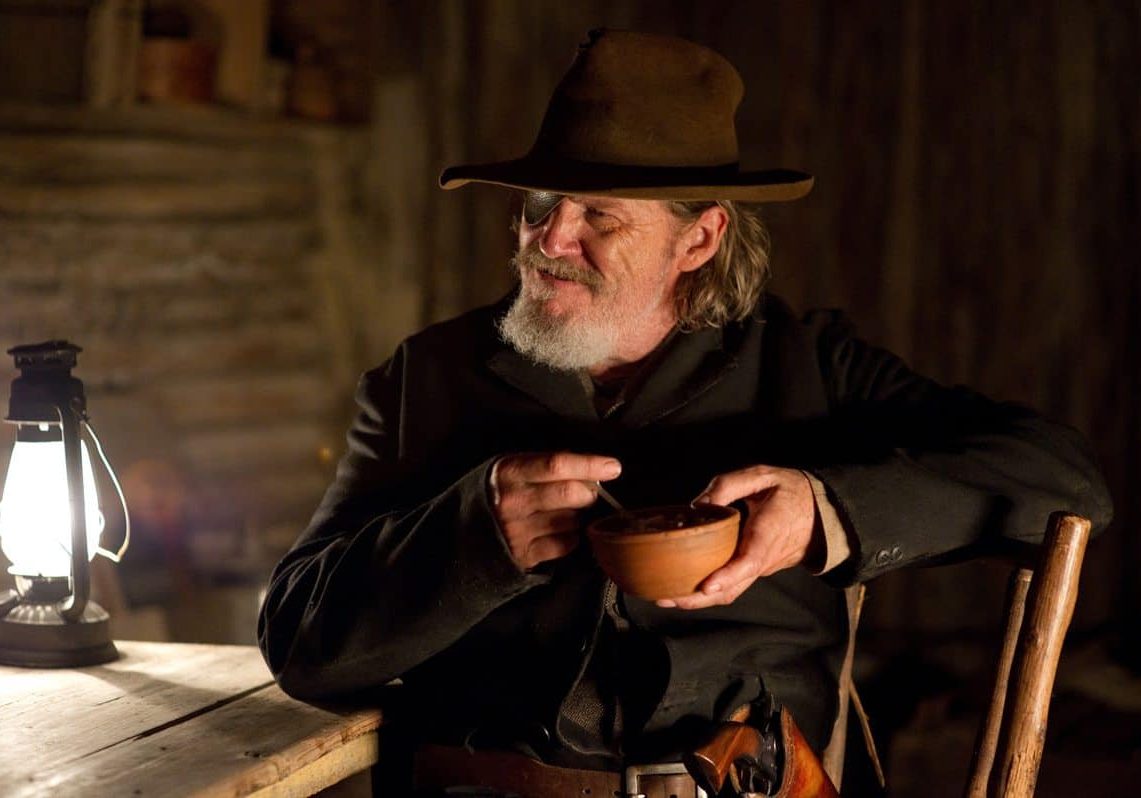
Q & A with a True Brit
Roger Deakins BSC ASC / True Grit
BY: Bob Fisher
True Grit is the 11th collaboration for Roger Deakins BSC ASC with filmmakers Joel and Ethan Coen. Deakins earned four of his eight Oscar nominations for their co-ventures on Fargo (1996), O Brother, Where Art Thou (2000), The Man Who Wasn’t There (2001) and No Country For Old Men (2007), with the latter two also gleaning BAFTA Awards. He received an additional BAFTA and Oscar nomination for The Reader (shared with Chris Menges BSC ASC), writes Bob Fisher.
His other collaborations with the Coen brothers were Barton Fink in 1991, The Hudsucker Proxy in 1994, The Big Lebowski in 1998, Intolerable Cruelty in 2003, The Ladykillers in 2004 and A Serious Man in 2009.
The script for True Grit is an adaptation of a novel written by Charles Portis. The story takes place on the American frontier during the 1860s. A 14-year-old girl named Mattie Ross rides into town and convinces US Marshall Reuben Cogburn and a Texas Ranger named La Boeuf to help her track down Tom Chaney, a ranch hand who murdered her father. The film was produced by Paramount Pictures. The cast features Jeff Bridges as Cogburn, Josh Brolin as the ranch hand, Matt Damon as La Boeuf and Hailee Steinfeld as Mattie.

Q: When did the Coen brothers tell you about True Grit?
RD: It was around the time we were working on A Serious Man. I read the book while they were still working on the script.
Q: How did you prepare to shoot a Western film on the American frontier?
RD: I studied many Western films when I was preparing to shoot The Assassination Of Jesse James. I also had the experience of shooting that film. Most of our preproduction discussions about True Grit happened while I was scouting locations with Joel and Ethan.
Q: What were the discussions about format, and whether there should be a DI?
RD: There's no real discussion about whether to do a DI, because we've done that ever since O Brother Where Art Thou. That was one of the first DIs. There was also no real discussion about whether or not it should be widescreen. True Grit was produced in Super 35 format (in 2.4:1 aspect ratio). The big exterior locations are an important part of the story. We wanted the audience to see and feel that scope. Actually, I was surprised while I was timing the DI just how much of the final cut is interior or exterior night work set in the town of Fort Smith. There are not as many day exteriors as you might imagine in a traditional Western.
Q: How did you motivate light for night scenes?
RD: We motivated light for night exteriors with campfires and the moon and interiors with fireplaces and lanterns. The first reel is entirely set in Fort Smith where Mattie is searching for somebody to help her avenge the killing of her father. There, many day and night interiors with the night scenes in a boarding house are lit by gas lamps and an undertaker's place is lit by hanging oil lamps. A day interior of a courtroom is lit by a combination of shafts of sunlight and oil lamps.
There are a couple of night exteriors on the trail with no obvious source of light other than the moon. That is sort of a cinematographer’s nightmare in my mind. I used some pretty big rigs. One large night scene takes place around a cabin near a big canyon that was maybe a quarter or half a mile wide. The scene begins with people approaching the cabin on horseback. It was quite a big area. We had long lines of lights on the hillside and created a soft moonlight light effect.
Q: What kind of lights were you using for those scenes?
RD: I had a total of 55 18Ks and 12K HMIs. I never had all 55 of them burning on any one setup. There were three separate parts to an extended sequence that takes place outside of the cabin. Each section had a different eyeline with the camera on a different axis. To facilitate this, we had to light from three different angles and each rig had to be in place beforehand, so as to allow us to very quickly change from one to another.
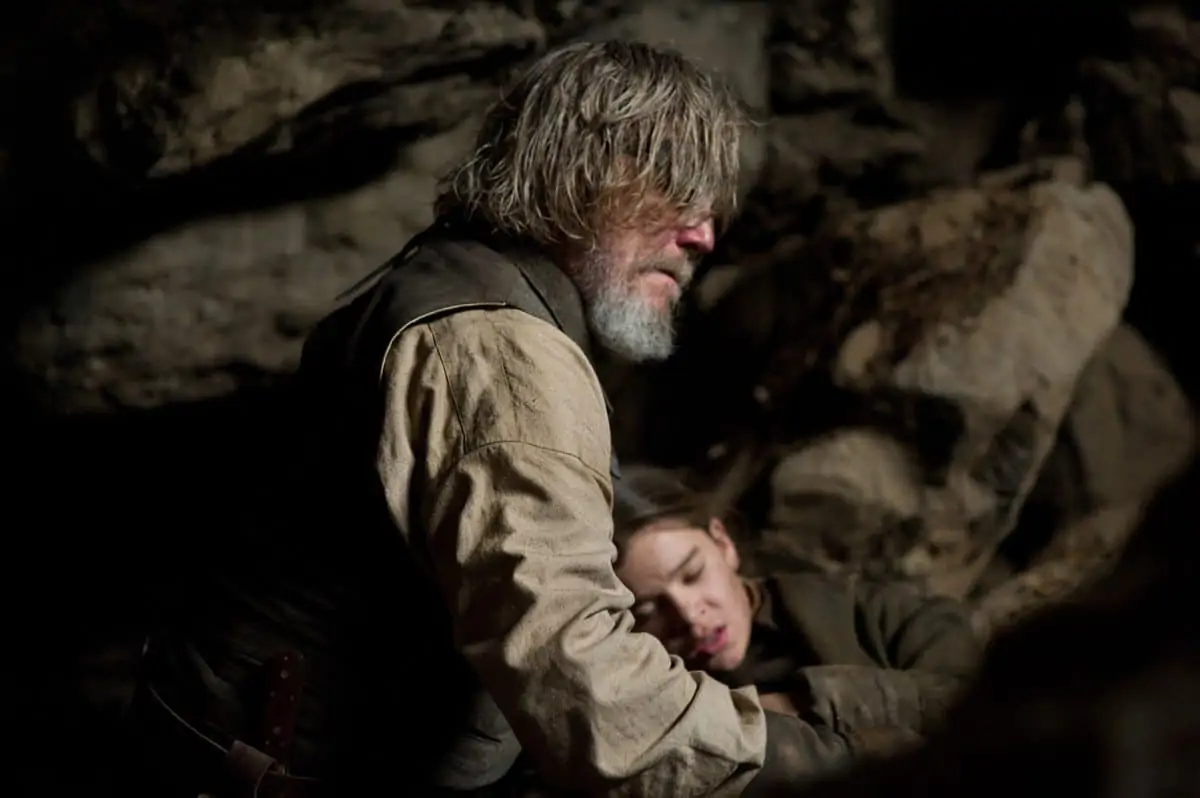
Q: What was your camera package?
RD: My camera package was provided by Otto Nemenz. I used an ARRI 535 B and an ARRILite camera with ARRI Master Primes lenses. We covered a couple of scenes with two cameras, but it was really a single camera show. The ARRI 535 B was my main camera. I used the ARRILite for handheld shots and as a backup.
Q: Would you describe the cinematography as objective or subjective? In other words, do the audience feel like participants or spectators when they watch this film?
RD: A lot of the story is seen from the girl's point of view. We want the audience to experience the world as she sees it. A lot of that feeling comes from using fairly wide angle lenses that puts the audience very close to the action.
Q: What do you consider a fairly wide angle lens?
RD: We mainly used 27, 32, 35 and 40mm lenses, and sometimes a 50mm for close-ups. I occasionally used longer lenses for point-of-view shots, but for dialogue scenes I was generally using a 32 or a 40mm lens or something in that range.
Q: Was True Grit produced mainly at practical locations?
RD: There were a few small sets, but it was mainly locations. We shot the interior of a cabin and a cave on stage. Also, because there were limits to the hours she could work, we did some close shots of Hailee for our night time exterior scenes on stage.
Q: What were some of the practical locations?
RD: We had a courthouse in a town called Blanco, which is south of Austin, Texas. We dressed it to look like the 1860s. We temporarily took over Granger, a turn-of-the-century town outside of Austin. Jess Gonchor (production designer) made it into an 1860’s town. There are also boarding house scenes that we filmed in an old house and various other practical locations.
Q: How long did you have to shoot True Grit?
RD: The schedule was around 55 days. That was a very tight schedule considering the night work and so much action with horses.
Q: Where were Joel and Ethan Coen while you were shooting? Were they in a video village or were they with you near the camera?
RD: Joel and Ethan often watched rehearsals on a monitor. They were usually somewhere near the camera while we were shooting. Every scene was storyboarded. That's the way Joel and Ethan approach all their films regardless of the complexity of the material.

"There are a couple of night exteriors on the trail with no obvious source of light other than the moon. That is sort of a cinematographer’s nightmare in my mind. I used some pretty big rigs."
- Roger Deakins BSC ASC
Q: Were there surprises while you were shooting?
RD: The biggest surprise occurred on the first day of production. We arrived on location and discovered two feet of snow on the ground. That scene didn't call for snow. We loaded the camera and lighting gear on a flat bed truck and drove 150 miles with the actors and shot another scene at another location. That’s the kind of film it was.
Q: Does your documentary experience help on a movie like True Grit?
RD: I do think it helps me. The experience I gained shooting documentaries helps me with placement and the way I move the camera. It has also affected the way I treat lighting. I also think my documentary background helps me work fast.
Q: What film stocks were you using?
RD: I was using (Kodak Vision3 200T) 5217 for most day exteriors and (Kodak Vision3 500T) 5219 for night and interior scenes.
Q: Were you using them as recommended or pushing or pulling exposures?
RD: I very rarely push or pull film, as I see no need for it.
Q: Does knowing you are going to do a DI affect how you shoot?
RD: A little bit but not a great deal. I never use filters these days because it gives me a little more flexibility in the DI.
Q: Which lab did you work with on this film?
RD: Deluxe in Los Angeles.
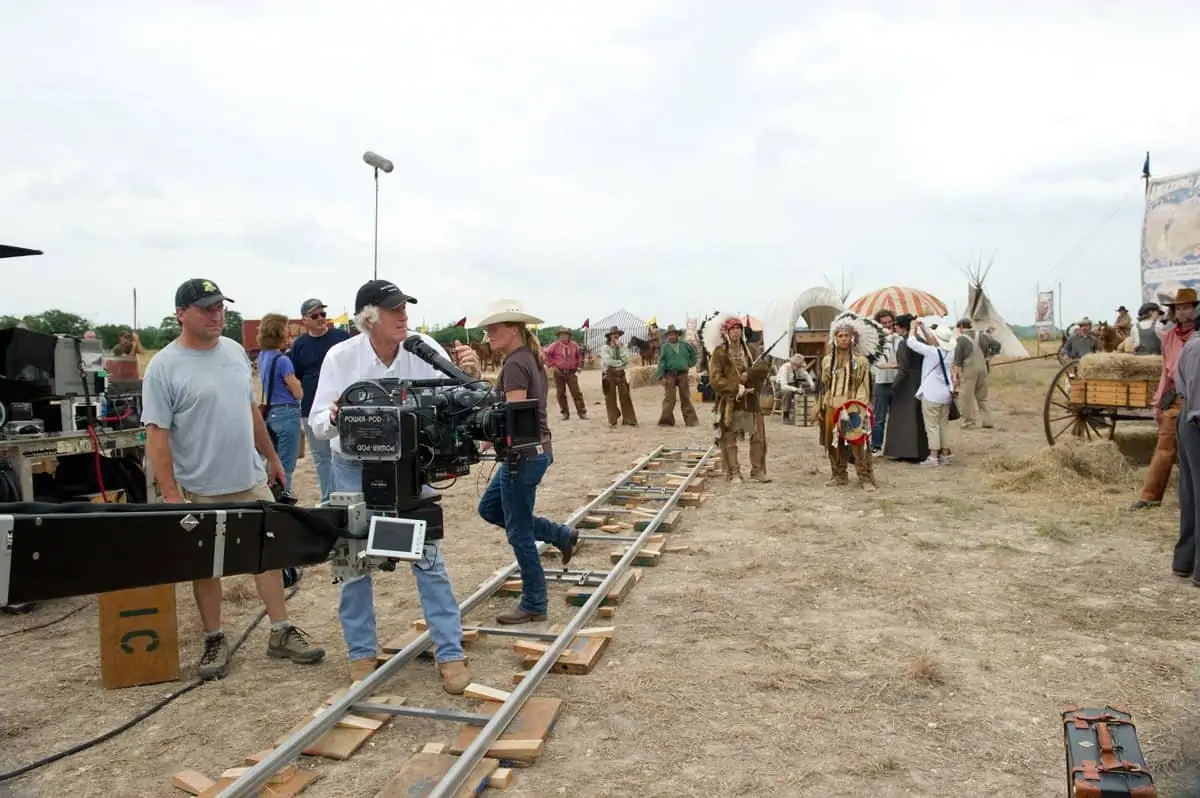
Q: How about dailies?
RD: I got digital dailies from EFILM (in Los Angeles). Rick Brown was our dailies timer and Yvan Lucas oversaw the work. Rick sent me a drive, which I then downloaded into their calibrated eVue monitoring system. I also had the lab print a setup from each sequence to check the negative, which I then viewed on a LOCPRO projector.
Q: How old is Hailee Steinfield?
RD: She was 12, I think, at the time of our shoot. That limited the length of time she could work each day, and Hailee is in a large part of the film. We had a very good double, whom we worked with for over-the-shoulder shots and some riding scenes. But Hailee is a very good rider, so we did a lot of those scenes with her. We just had to structure the days around her schedule. Her age impacted us the most on night work, because we didn't have her after a certain hour. We did all we could with her first and also shot some campfire scenes on stage.
Q: Did it take any particular sensitivity in dealing with someone that young?
RD: Not with Hailee. She was wonderful on the set, both as an actress and a person, and her performances were brilliant. Hailee is very adult for her age, and everyone in the cast and crew were very supportive of her.
Q: How do two people direct a film? Are they always on the same page?
RD: They both work on a project from the beginning and so they are very much in sync
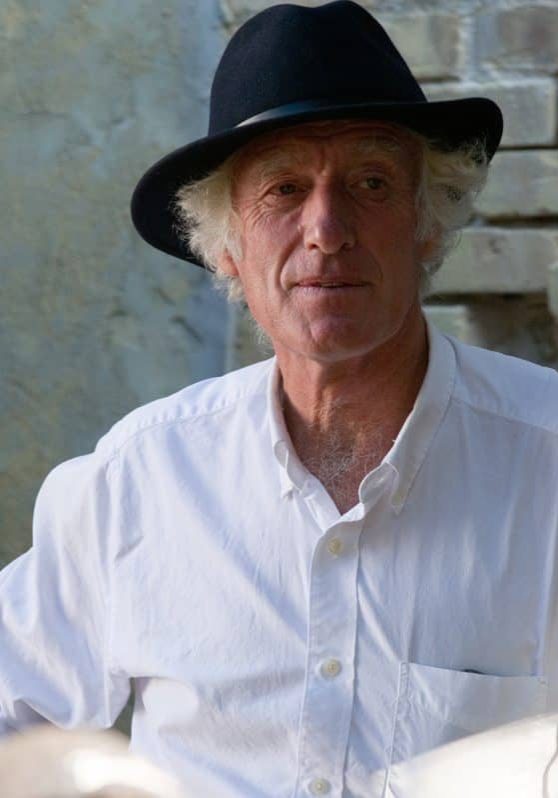
"We arrived on location and discovered two feet of snow on the ground. That scene didn't call for snow. We loaded the camera and lighting gear on a flat bed truck and drove 150 miles with the actors and shot another scene at another location."
- Roger Deakins BSC ASC
Q: Did you do a 2K or a 4K scan for the DI?
RD: The film was scanned at 4K resolution and the film-out was done at 4K. There is a very significant quality advantage with a 4K scan.
Q: Give us some examples of things you did in DI.
RD: Mainly, it was about balancing. We were on a very tight schedule, so on many of our day exteriors we didn't have the luxury of waiting for perfect light and at times not even good light. One of the advantages of storyboarding is that you can structure the day for the way the sun travels across the sky, but you still have no control over the weather. Even with good weather, it's not always possible to predict when the day will cloud over or vice versa. Consequently, we sometimes had to shoot different parts of the same scene in cloudy weather and in sunlight. The DI timing didn't solve this problem, but it did allow me some way of softening the mismatches. At other times, I would simply change the overall saturation of the images, or take down the contrast a little. We had one sequence that we shot in Texas, where the trees were very green and I took down the saturation so that the scene looked a little more like winter.
Q: Who was the DI colorist?
RD: Mitch Paulson. It's the first time I worked with him as he is quite new to the DI process, but he is very good and also very quick!

